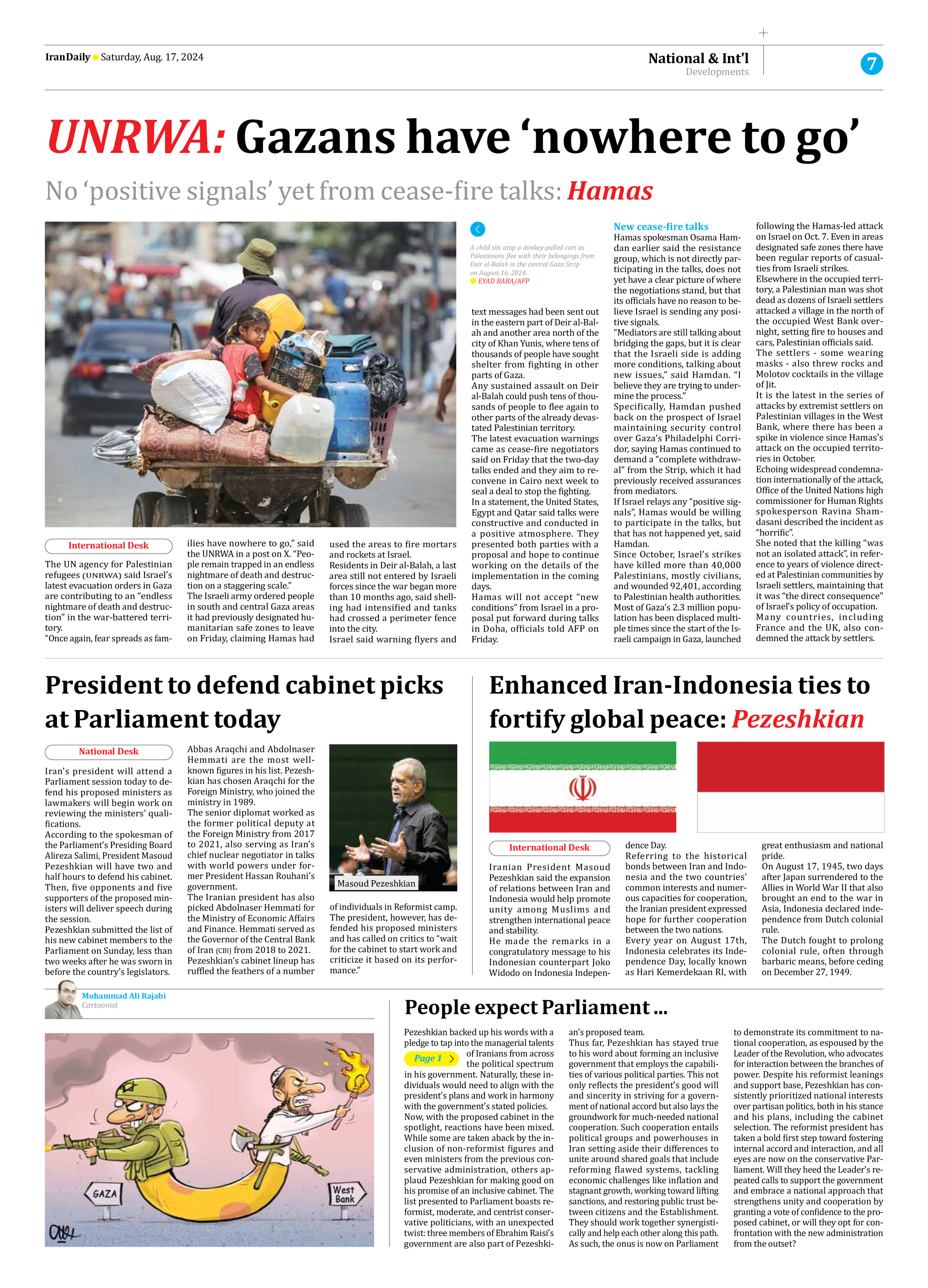
Copy in clipboard...
UNRWA: Gazans have ‘nowhere to go’
No ‘positive signals’ yet from cease-fire talks: Hamas
“Once again, fear spreads as families have nowhere to go,” said the UNRWA in a post on X. “People remain trapped in an endless nightmare of death and destruction on a staggering scale.”
The Israeli army ordered people in south and central Gaza areas it had previously designated humanitarian safe zones to leave on Friday, claiming Hamas had used the areas to fire mortars and rockets at Israel.
Residents in Deir al-Balah, a last area still not entered by Israeli forces since the war began more than 10 months ago, said shelling had intensified and tanks had crossed a perimeter fence into the city.
Israel said warning flyers and text messages had been sent out in the eastern part of Deir al-Balah and another area north of the city of Khan Yunis, where tens of thousands of people have sought shelter from fighting in other parts of Gaza.
Any sustained assault on Deir al-Balah could push tens of thousands of people to flee again to other parts of the already devastated Palestinian territory.
The latest evacuation warnings came as cease-fire negotiators said on Friday that the two-day talks ended and they aim to reconvene in Cairo next week to seal a deal to stop the fighting.
In a statement, the United States, Egypt and Qatar said talks were constructive and conducted in a positive atmosphere. They presented both parties with a proposal and hope to continue working on the details of the implementation in the coming days.
Hamas will not accept “new conditions” from Israel in a proposal put forward during talks in Doha, officials told AFP on Friday.
New cease-fire talks
Hamas spokesman Osama Hamdan earlier said the resistance group, which is not directly participating in the talks, does not yet have a clear picture of where the negotiations stand, but that its officials have no reason to believe Israel is sending any positive signals.
“Mediators are still talking about bridging the gaps, but it is clear that the Israeli side is adding more conditions, talking about new issues,” said Hamdan. “I believe they are trying to undermine the process.”
Specifically, Hamdan pushed back on the prospect of Israel maintaining security control over Gaza’s Philadelphi Corridor, saying Hamas continued to demand a “complete withdrawal” from the Strip, which it had previously received assurances from mediators.
If Israel relays any “positive signals”, Hamas would be willing to participate in the talks, but that has not happened yet, said Hamdan.
Since October, Israel’s strikes have killed more than 40,000 Palestinians, mostly civilians, and wounded 92,401, according to Palestinian health authorities.
Most of Gaza’s 2.3 million population has been displaced multiple times since the start of the Israeli campaign in Gaza, launched following the Hamas-led attack on Israel on Oct. 7. Even in areas designated safe zones there have been regular reports of casualties from Israeli strikes.
Elsewhere in the occupied territory, a Palestinian man was shot dead as dozens of Israeli settlers attacked a village in the north of the occupied West Bank overnight, setting fire to houses and cars, Palestinian officials said.
The settlers - some wearing masks - also threw rocks and Molotov cocktails in the village of Jit.
It is the latest in the series of attacks by extremist settlers on Palestinian villages in the West Bank, where there has been a spike in violence since Hamas’s attack on the occupied territories in October.
Echoing widespread condemnation internationally of the attack, Office of the United Nations high commissioner for Human Rights spokesperson Ravina Shamdasani described the incident as “horrific”.
She noted that the killing “was not an isolated attack”, in reference to years of violence directed at Palestinian communities by Israeli settlers, maintaining that it was “the direct consequence” of Israel’s policy of occupation.
Many countries, including France and the UK, also condemned the attack by settlers.







